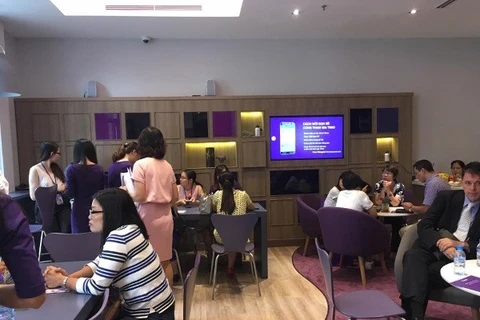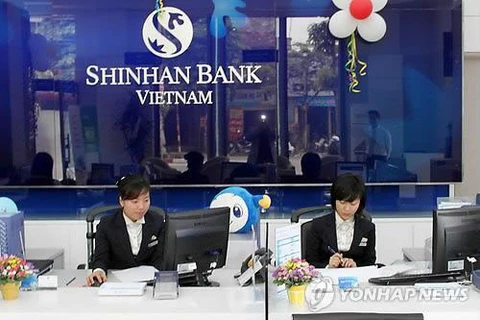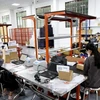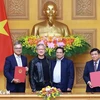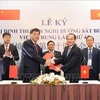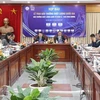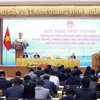 The banking sector is seeing a digitalisation wave driven by industry 4.0 technologies. (Photo: VNA)
The banking sector is seeing a digitalisation wave driven by industry 4.0 technologies. (Photo: VNA) Hanoi (VNA) - Vietnam is witnessing a wave of digitalisation in the retail banking industry, driven by industry 4.0 technologies.
At the Vietnam Retail Banking 2017 Forum on December 6, Nguyen Toan Thang, General Secretary of the Vietnam Banks Association, said banks are making positive moves towards new technologies.
A transition from traditional banking to digital banking was taking place along with a transformation in the business model to enhance customer experience with new products and solutions developed from the application of new technologies such as big data and artificial intelligence.
Industry 4.0 would create impetus for the development of retail banking, especially in the application of technologies to meet demand of technology-savvy customers, he said.
Financial expert Can Van Luc said Vietnam’s retail banking had significant potential for development in Industry 4.0, given the high ratio of internet coverage and rapid e-commerce development.
He cited statistics that 54 percent of population used the internet and 62 percent of internet users did online shopping. In addition, payments through QR code were also booming with an increase of 120 percent in the January-September period. From 2018, 50,000 points would accept QR code payment compared with the current 5,000 points.
Luc forecast that revenue from retail banking would be accounted from 44 percent of banks’ revenue.
However, Luc said Vietnam should pay attention to developing human resources, improving the digital infrastructure system and completing legal framework for the development of digital banking.
Legal framework was of significant importance, Luc said. For example, Vietnam was slow in issuing regulations for managing cryptocurrencies, especially the bitcoin, although they were booming globally
“Industry 4.0 is coming rapidly and it will not wait for anyone. Early boarding will lead to competitiveness,” Luc said.
According to Nghiem Thanh Son, Deputy Director of the State Bank of Vietnam’s Payment Department, as of the end of September, 97 credit institutions were providing payment services in Vietnam, including ATM, POS, internet and mobile banking.
There were 127 million banking cards with 66.6 million individual accounts.
The fintech ecosystem was also developing in the country, Son said, adding that the number of e-wallet users had increased by 1.5 times compared with 2016 to reach 9.6 million.
Son said Vietnam had potential to develop new payment channels, especially internet and mobile banking, with more than 60 percent of the population under 35 and adaptive to new technologies.
Son said the central bank would review legal framework and raise regulations about new payment methods, such as e-wallet and cryptocurrencies, next year.
The central bank would also consider the issuance of standards for cards, QR code payment, as well as conditions for licensing payment services for non-bank institutions.-VNA
VNA
